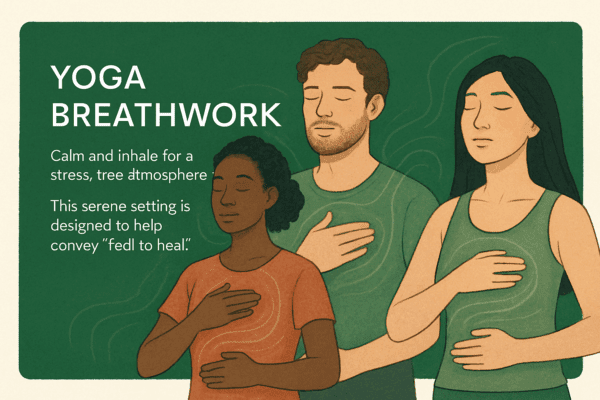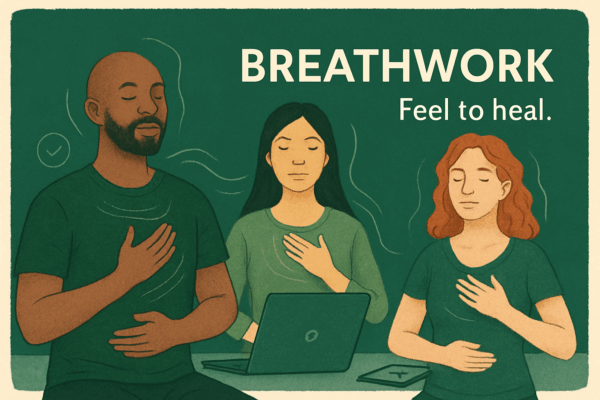Curious how holistic healing is evolving in 2025? Biodynamic breathwork is at the forefront, transforming trauma recovery and emotional wellness around the globe. This guide will walk you through the core principles, innovative techniques, and proven benefits of this powerful approach. Discover its fascinating origins, explore the unique six-element system, and learn how to release deep-seated tension for real change. Ready to unlock new levels of personal growth? Dive in and find out how biodynamic breathwork could be your path to lasting transformation.
What is Biodynamic Breathwork? Origins and Principles
Defining Biodynamic Breathwork
Biodynamic breathwork is a somatic, trauma-informed approach designed to help individuals release chronic tension and heal emotional wounds stored in the body. Developed by Giten Tonkov, this method integrates philosophies from both Eastern and Western healing traditions.
At its core, biodynamic breathwork recognizes that trauma and stress can become “trapped” in the body’s tissues and nervous system. The practice uses a unique system of six elements—breath, movement, sound, touch, emotional expression, and meditation—to create deep transformation.
Unlike conventional breathwork, this approach emphasizes attunement to the body and moment-to-moment awareness. For an in-depth look at the foundational system, see the Principles of Biodynamic Breathwork.
Historical Development and Influences
The roots of biodynamic breathwork trace back to Reichian bodywork, somatic therapy, and insights from modern neuroscience. Influences from ancient yogic and shamanic practices also play a significant role in shaping its holistic framework.
Over the past decade, biodynamic breathwork has gained traction due to increasing scientific validation and a global surge in trauma-informed wellness. Unlike modalities such as Holotropic or Wim Hof breathwork, this approach centers on gradual, integrative release rather than intense catharsis.
As more people seek trauma-sensitive methods, biodynamic breathwork stands out for its careful balance of science and tradition.
The Six Core Elements Explained
The six core elements form the foundation of biodynamic breathwork practice. Each element serves a distinct purpose in supporting the release of tension and fostering emotional freedom:
- Breath: Acts as the primary tool for shifting energy and awareness.
- Movement: Mobilizes stuck energy and helps the body unwind.
- Sound: Vocalization supports emotional expression and nervous system regulation.
- Touch: Gentle, intentional touch offers grounding and a sense of safety.
- Emotional Expression: Encourages authentic release of feelings.
- Meditation: Integrates the experience, grounding insights and self-awareness.
Together, these elements work synergistically, guiding practitioners through a holistic healing process that is both safe and transformative.
The Seven Belts of Tension
A core concept in biodynamic breathwork is the “seven belts of tension.” These are bands of muscular and emotional holding running horizontally through the body:
- Ocular (eyes, forehead): linked to suspicion, grief
- Oral (mouth, jaw): unspoken anger, expression issues
- Cervical (neck): communication, fear
- Thoracic (chest): grief, love, joy
- Diaphragmatic (diaphragm): control, anxiety
- Abdominal (stomach): trust, empowerment
- Pelvic (hips, base): safety, sexuality
For example, jaw tension can often signal unexpressed anger, while chest constriction may relate to grief. Releasing each belt is essential for holistic emotional and physical well-being.
Who Can Benefit and When to Use Biodynamic Breathwork
Biodynamic breathwork is suitable for a wide range of individuals, including those dealing with chronic stress, anxiety, PTSD, or emotional blockages. Therapists, coaches, and holistic health professionals also integrate this practice into their work.
It is effective for both resolving acute trauma and supporting long-term personal growth. However, it is important to consider safety—those with severe psychiatric conditions should consult a qualified professional before beginning. Proper guidance ensures that the process remains safe, empowering, and deeply healing for all participants.
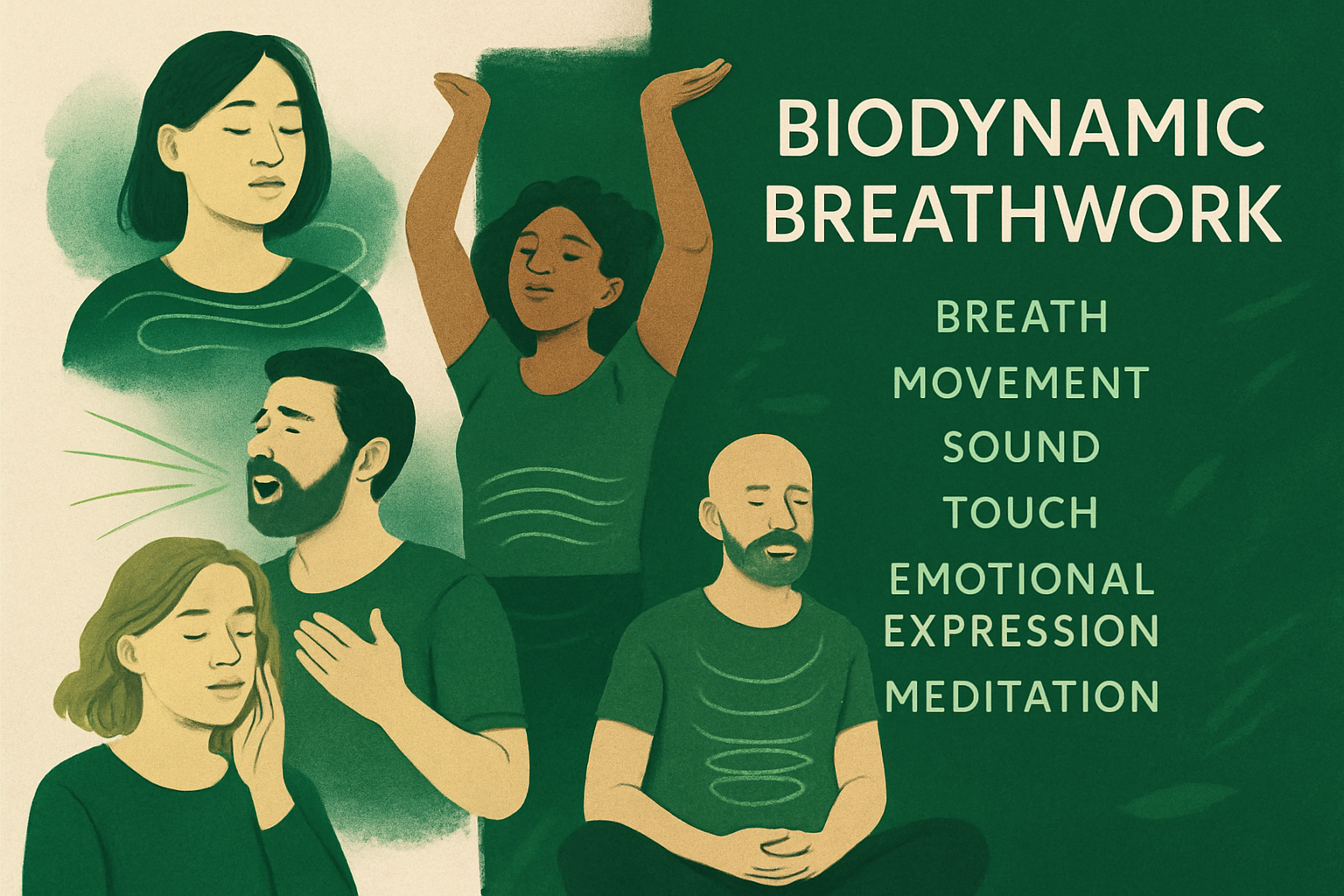
How Biodynamic Breathwork Works: The Science and Mechanisms
Understanding how biodynamic breathwork functions requires a look at the body’s natural systems for processing trauma and stress. This method is grounded in neuroscience and somatic therapy, using rhythmic breathing and mindful awareness to unlock stored tension. Let’s break down the science and mechanisms that make this approach unique and effective.
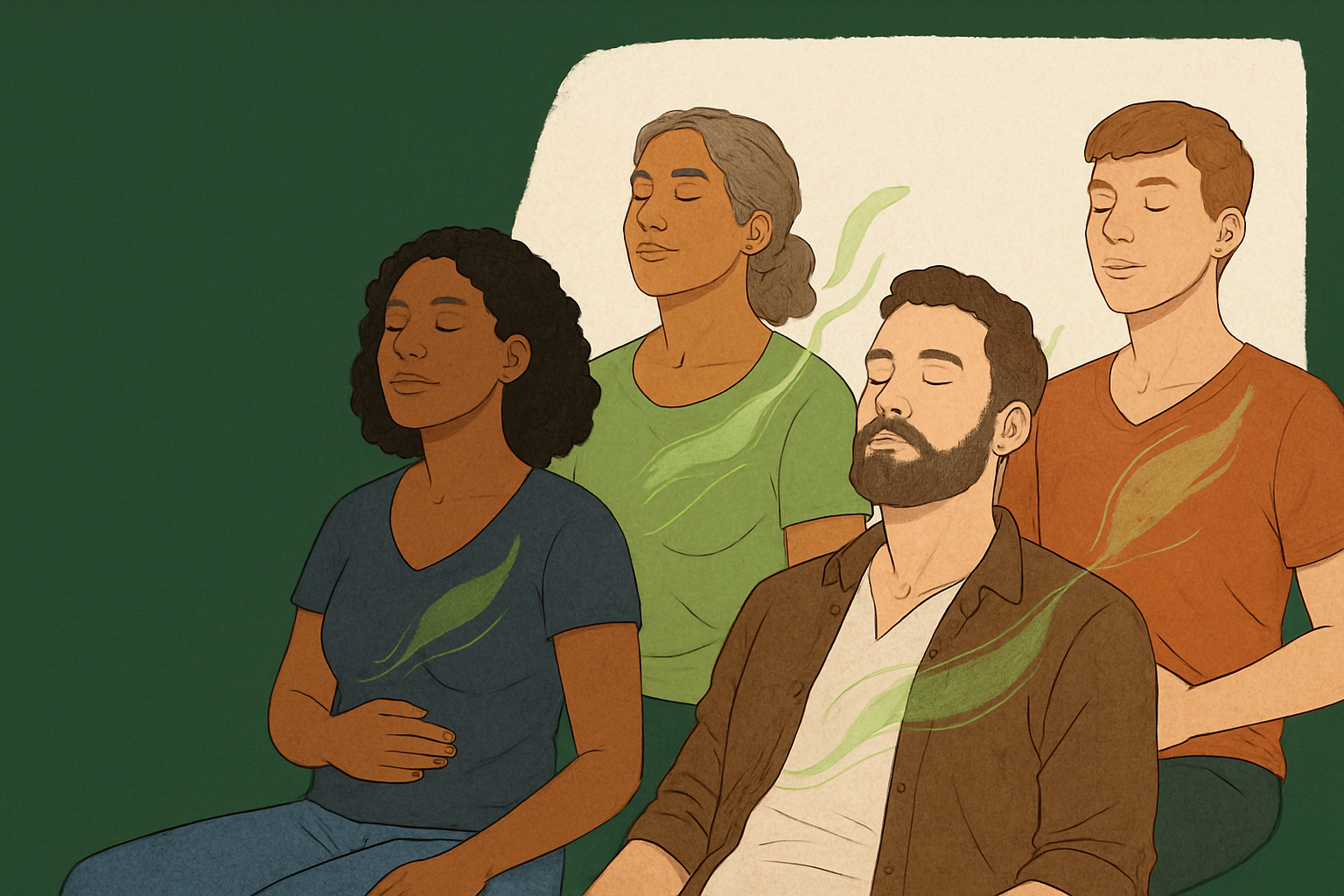
Trauma, the Nervous System, and Somatic Healing
Trauma is more than a psychological event—it’s a full-body experience. In biodynamic breathwork, trauma is seen as a physiological imprint, often stored as tension in muscles and fascia. This tension can persist for years, shaping posture, breathing, and even emotional responses.
The nervous system plays a pivotal role. Through the lens of polyvagal theory, we understand that breath can shift the body from fight-or-flight into rest-and-digest. Biodynamic breathwork uses this by cycling between contraction and expansion, slowly unwinding the layers of stored stress. Each breath becomes a bridge between mind and body, encouraging gentle release and repair.
The Principle of Titration and Pendulation
Biodynamic breathwork emphasizes safety and gradual change. The principle of titration means releasing trauma bit by bit, never forcing the body to process more than it can handle. This prevents overwhelm and supports long-term healing.
Pendulation is the art of moving attention between discomfort and areas of safety. Instead of diving deep into pain, practitioners gently oscillate, building resilience in the nervous system. For example, a session may involve a few minutes of deep breathing followed by a pause to notice sensations of calm. Over time, this builds a wider capacity for challenging emotions and sensations.
Breath Patterns and Physiological Effects
Breath is the primary tool in biodynamic breathwork, and how you breathe shapes your entire physiology. Slow, deep breathing activates the parasympathetic nervous system, lowering heart rate and supporting digestion. Faster breath stimulates the sympathetic system, increasing alertness.
Scientific studies show that intentional breathwork improves heart rate variability and reduces cortisol, the body’s main stress hormone. For a detailed look at the physiological mechanisms, see The Science Behind Breathwork and Stress Reduction. By shifting breath patterns, practitioners can influence mood, mental clarity, and physical well-being—making breath a powerful tool for transformation.
Emotional Expression and Somatic Release
In biodynamic breathwork, emotional release is encouraged, not suppressed. Sound, movement, and touch are integrated to amplify somatic processing. For instance, vocalizing during exhale can release tension in the throat, while shaking or stretching helps discharge energy.
These practices help bring unconscious emotions to the surface. When paired with breath, they allow the body to let go of old patterns. Over time, individuals report feeling lighter, more present, and less burdened by unresolved emotion. The process is gentle but deeply effective, honoring the body’s wisdom.
Safety, Integration, and the “Window of Tolerance”
Safety is central in biodynamic breathwork. Practitioners are taught to create internal and external resources—such as grounding through touch or focusing on the breath—to stay within their “window of tolerance.” This window is the optimal zone where emotions can be processed without shutting down or becoming overwhelmed.
Integration after each session is equally important. Gentle movement, hydration, and reflection help solidify new patterns. Self-regulation techniques, like placing a hand on the heart or focusing on the feet, support ongoing resilience. With consistent practice, the window of tolerance expands, making emotional triggers easier to navigate.
Step-by-Step Guide: Core Biodynamic Breathwork Techniques
Ready to explore biodynamic breathwork in practice? This step-by-step guide will help you prepare, experience, and integrate powerful techniques for deep transformation. Whether you’re new to breathwork or seeking to refine your skills, each phase is essential for safety, effectiveness, and lasting change.
Preparing for a Session: Safety and Intention
Starting biodynamic breathwork requires a foundation of safety and clear intention. Choose a quiet, comfortable space where you feel secure and free from interruptions. Before you begin, set a personal intention for your practice. It might be to release tension, process emotions, or simply explore your body-mind connection.
Gather supportive resources. This could be a favorite grounding object, a journal, or soothing music. If you’re new to biodynamic breathwork, working with a certified practitioner is highly recommended. They help guide you, ensure safety, and support you if intense emotions arise.
Remember, consent and self-care are paramount. Always listen to your body and honor your limits throughout the session.
The Six Elements in Practice: How to Combine Them
Biodynamic breathwork integrates six core elements for a holistic experience:
- Breath: Begin with conscious, connected breathing to activate the body’s energy.
- Movement: Add gentle swaying, stretching, or shaking to mobilize tension.
- Sound: Use vocalizations like sighs, hums, or tones to amplify release.
- Touch: Apply self-touch or allow practitioner support for grounding and safety.
- Emotional Expression: Let feelings surface, whether through tears, laughter, or words.
- Meditation: Close with stillness, observing sensations and emotions as they settle.
A typical session flows from breath to movement, then sound and touch, followed by emotional expression, and ends with meditation. For chest tension, for example, you might breathe deeply, roll your shoulders, sigh audibly, place a hand on your heart, allow sadness to surface, and finally rest in quiet awareness.
For more detailed instructions and examples, see these breathwork techniques and exercises tailored to biodynamic breathwork. Self-practice is effective for maintenance, but guided sessions offer deeper safety and insight.
Addressing the Seven Belts of Tension: A Chronological Approach
Biodynamic breathwork recognizes seven “belts” of tension: ocular, oral, cervical, thoracic, diaphragmatic, abdominal, and pelvic. Each belt stores unique emotional patterns and may require targeted techniques.
Try these sample exercises:
- Ocular: Gentle eye movements, softening the forehead.
- Oral: Jaw massage, humming, and exaggerated yawns.
- Cervical: Slow neck rolls, vocal sounding.
- Thoracic: Expansive chest breaths, shoulder stretches.
- Diaphragmatic: Belly breathing, ribcage expansion.
- Abdominal: Massage, twisting motions.
- Pelvic: Hip circles, grounding postures.
Working on one belt often influences others, so move sequentially for more holistic release. Notice how freeing your jaw can ease your chest, or how hip work grounds your entire body.
Felt Sense and Body Awareness
A cornerstone of biodynamic breathwork is developing the “felt sense”—a keen, nonjudgmental awareness of bodily sensations. Pause often to scan your body. Can you notice warmth, tingling, heaviness, or lightness? These are signals of energy moving and tension releasing.
“Felt sense” meditations invite you to track sensations as they evolve. You might focus on the rise and fall of your belly, or the subtle pulsing in your hands. Over time, this practice deepens your connection to internal cues and builds confidence in navigating emotional terrain.
Learning to trust these signals is key for safe, transformative breathwork.
Titration and Pendulation in Practice
In biodynamic breathwork, titration means releasing tension in small, manageable doses. If you feel overwhelmed, pause and return to a neutral state. This prevents emotional flooding and builds nervous system resilience.
Pendulation involves gently oscillating between states of activation (intense sensation or emotion) and rest (calm, safety). For example, after a round of deep breathing, take a few slow, gentle breaths. Notice the contrast. This rhythm helps your body process old trauma without getting stuck.
Always check in with yourself. If things become too intense, slow down or stop. Gradual progress ensures lasting change and keeps you within your window of tolerance.
Aftercare and Integration
After biodynamic breathwork, it’s crucial to ground and integrate your experience. Try these aftercare steps:
- Gentle movement: Walk, stretch, or sway to reconnect with your body.
- Hydration: Drink water to support physical release.
- Journaling: Write down insights, emotions, or sensations that surfaced.
- Rest: Give yourself permission to relax or nap.
Notice signs of integration, like increased calm, emotional clarity, or spontaneous insights. If you feel unsettled or triggered, reach out to a practitioner or trusted support person. Integration is an ongoing process—each session builds upon the last.
Group vs. Individual Sessions: What to Expect
Biodynamic breathwork can be practiced alone, one-on-one, or in groups. Each format offers unique benefits.
| Format | Benefits | Considerations |
|---|---|---|
| Group | Collective energy, shared support, community | Less individual attention |
| Individual | Tailored guidance, privacy, deeper trauma work | May feel more intense or vulnerable |
Group sessions harness collective energy and foster connection. You might feel inspired by others’ breakthroughs. Individual sessions allow for personalized pacing and deeper exploration—ideal for those working with complex trauma.
Choose what feels safest and most supportive for your needs.
The Biodynamic Breathwork Institute: Training and Support
The Biodynamic Breathwork Institute, founded by Giten Tonkov, is a global leader in trauma-informed breathwork education. The Institute offers:
- Workshops: Introductory and advanced in-person or online sessions.
- Practitioner Certifications: Comprehensive training for aspiring professionals.
- Guided Sessions: Live and recorded group experiences.
- Self-Study Programs: Flexible learning for personal growth.
Biodynamic breathwork training emphasizes science-backed methods and a supportive, international community. Both individuals and professionals can benefit from ongoing support, free community classes, and advanced mentorship.
Joining the Institute connects you with a network of practitioners committed to holistic healing.
Deep Dive: The Seven Belts of Tension and Emotional Release
Understanding the seven belts of tension is central to biodynamic breathwork. These belts, first mapped by Wilhelm Reich and expanded by modern somatic therapies, represent zones where the body stores emotional and physical stress. By working through each belt methodically, practitioners can unlock deeply held trauma and restore natural flow to both body and mind. For a technical overview, see the Wilhelm Reich Belts of Tension resource.
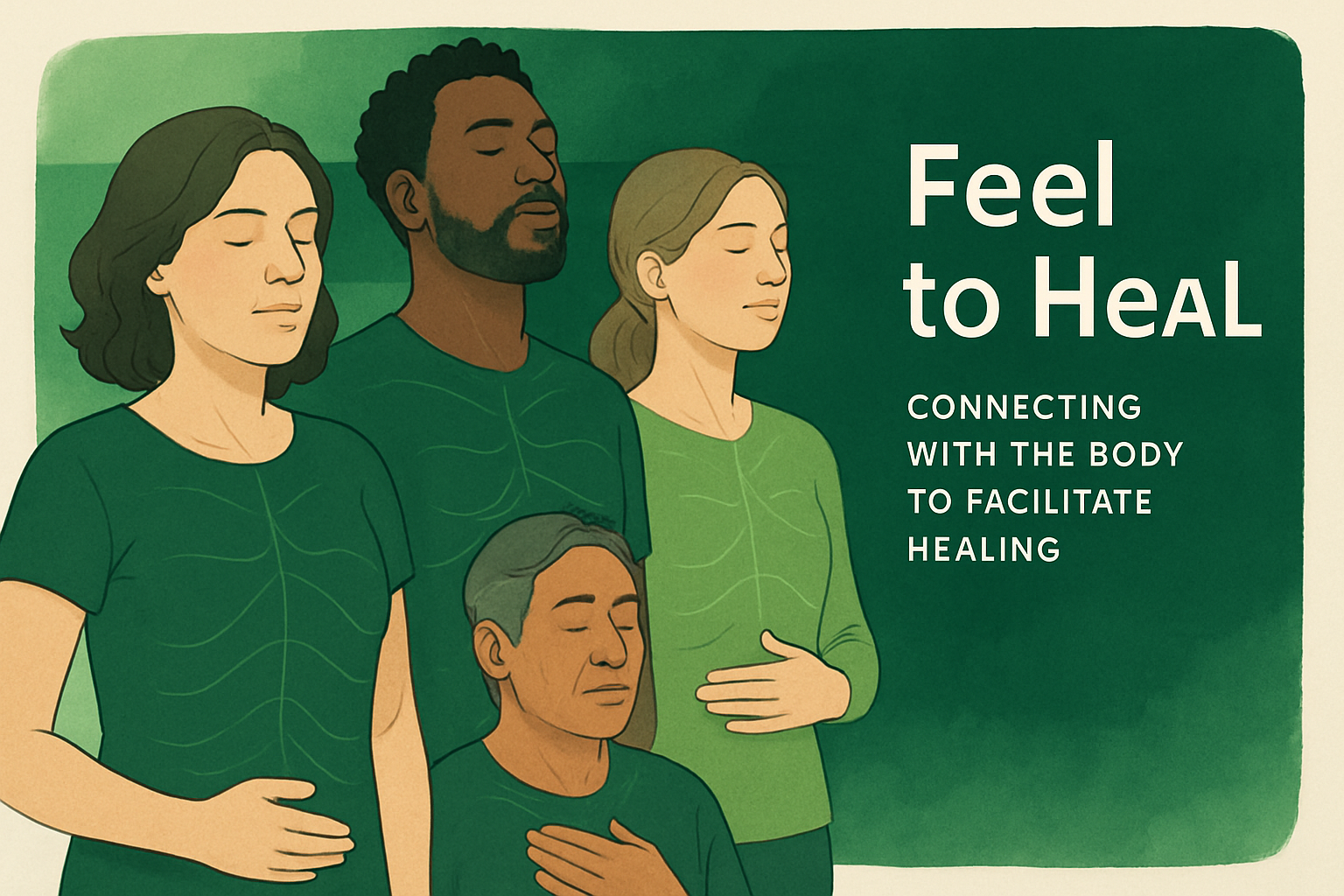
Ocular Belt: Eyes, Forehead, and Head
The ocular belt is where many people first notice tension—think furrowed brows or headaches after a long day. In biodynamic breathwork, this area is linked to emotions like suspicion, anger, grief, and emotional detachment. Signs of ocular belt tension include:
- Persistent headaches
- Tightness around the eyes or forehead
- Tunnel vision or difficulty relaxing the gaze
Techniques for release include gentle eye movement, forehead massage, and exercises that soften peripheral vision. For example, a client burdened by workplace stress might find relief by practicing mindful blinking and slow, circular eye motions during a biodynamic breathwork session. This allows emotional energy to move and dissipate, paving the way for deeper relaxation.
Oral and Cervical Belts: Mouth, Jaw, Neck, and Voice
The oral and cervical belts govern self-expression, creativity, and the ability to speak one’s truth. Tension here often manifests as:
- Jaw clenching or grinding teeth
- Sore throat or “swallowing words”
- Stiffness or pain in the neck
Biodynamic breathwork addresses these blocks with jaw release exercises, gentle neck stretches, and vocal sounding. Imagine someone who struggles with public speaking—by working on the cervical belt, they can unlock suppressed fear or anger and experience greater ease in communication. This area is especially potent for those who feel unheard or creatively stifled.
Thoracic Belt: Chest, Heart, Shoulders, Arms
The thoracic belt is the emotional heart center. It’s where grief, longing, joy, and love are most deeply felt. Physical signs of restriction include:
- Collapsed chest posture
- Shoulder tension or rounded shoulders
- Shallow, rapid breathing
To release this belt, biodynamic breathwork uses heart-opening breath patterns, rolling the shoulders, and even self-hugging. For instance, after heartbreak, individuals often feel a heaviness in the chest; a focused session can help them process grief and rediscover openness. By breathing into the thoracic belt, practitioners reconnect with their emotional core and foster authentic self-compassion.
Diaphragmatic and Abdominal Belts: Diaphragm, Stomach, Lower Back
These belts are closely tied to pain, pleasure, trust, and empowerment. Signs of tension include:
- Shallow or restricted breathing
- Digestive discomfort or “gut reactions”
- Lower back stiffness
Biodynamic breathwork encourages belly breathing, gentle abdominal massage, and core movement to unlock these zones. Someone struggling with chronic digestive issues may find that releasing abdominal tension improves both emotional resilience and physical well-being. By learning to sense and breathe into the belly, clients can access deeper layers of trust and empowerment.
Pelvic Belt: Hips, Pelvis, Base of Spine
The pelvic belt is the foundation for feelings of safety, grounding, sexuality, and creativity. Common signs of blockages are:
- Hip tightness or inflexibility
- Lower back pain
- Sexual dysfunction or numbness
Practices like pelvic tilts, hip circles, and grounding visualizations are essential in biodynamic breathwork for this belt. For those recovering from trauma, restoring flow in the pelvic area can help reestablish a sense of safety and connection to life force. Addressing the pelvic belt often leads to breakthroughs in creativity and emotional security.
Interconnectedness and Sequential Release
Releasing tension in one belt frequently influences the others, highlighting the interconnected nature of the body. For example, softening the jaw can ease chest tightness, while freeing the hips may unlock emotional expression in the throat. A holistic, stepwise approach is vital in biodynamic breathwork, as it allows the nervous system to integrate changes safely and sustainably.
Case studies often reveal clients experiencing profound emotional breakthroughs after working on multiple belts, especially when guided by trauma-informed principles. To deepen your understanding of emotional release within this modality, explore the Emotional Release in Breathwork resource. This interconnected process is what makes biodynamic breathwork a powerful tool for lasting transformation and personal growth.
Benefits of Biodynamic Breathwork: Evidence and Real-World Impact
Curious about the real-world impact of biodynamic breathwork? This section breaks down the science and testimonials behind its benefits, showing how this holistic approach can spark transformation in body, mind, and relationships. Let’s explore the evidence and stories that are making biodynamic breathwork a leading modality for trauma healing and wellness.
Physical Health Improvements
Biodynamic breathwork is increasingly recognized for its positive impact on physical health. Regular practice can enhance cardiovascular function, improve lung capacity, and support better respiratory health. Many people report less muscle tension and chronic pain, as breathwork helps release tightness stored in the body.
Studies have shown that conscious breathing techniques, like those used in biodynamic breathwork, can increase heart rate variability—a key marker of resilience and nervous system balance. This kind of physiological shift helps the body recover from stress and supports overall vitality.
If you’re seeking a natural way to care for your body, biodynamic breathwork offers a holistic path to greater wellbeing.
Emotional and Psychological Healing
For emotional health, biodynamic breathwork is a game-changer. By working with breath, movement, and emotional expression, people can safely release anxiety, depression, and trauma. This process empowers individuals to process old wounds and build emotional resilience.
The scientific community is taking notice. A meta-analysis on breathwork’s impact on stress and mental health found significant reductions in stress, anxiety, and depressive symptoms across diverse populations. This evidence supports the role of biodynamic breathwork in trauma recovery and emotional balance.
Whether you’re addressing acute distress or seeking long-term growth, biodynamic breathwork is a powerful ally for psychological healing.
Enhanced Self-Awareness and Mind-Body Connection
A standout benefit of biodynamic breathwork is the deepened sense of self-awareness it fosters. Through regular sessions, practitioners learn to tune in to subtle sensations, thoughts, and emotions, building what’s known as interoceptive awareness.
This heightened connection between mind and body leads to better emotional intelligence and self-reflection. Over time, many people notice greater ease in recognizing and responding to their needs, rather than reacting automatically.
In a fast-paced world, biodynamic breathwork helps create a mindful pause, supporting enduring changes in self-perception and inner calm.
Relationship and Social Benefits
Biodynamic breathwork doesn’t just transform individuals—it can reshape relationships, too. By clearing emotional blockages and improving self-regulation, participants often find themselves more open, present, and empathetic with others.
Couples and families who practice together report increased intimacy, improved communication, and more effective conflict resolution. Emotional release through biodynamic breathwork fosters genuine connection, allowing people to show up authentically in their relationships.
These social benefits ripple outward, strengthening communities and deepening bonds among friends, partners, and colleagues.
Professional and Therapeutic Applications
Biodynamic breathwork is gaining traction among therapists, coaches, and holistic health practitioners. Its trauma-informed approach makes it a valuable addition to psychotherapy, somatic therapy, and personal development work.
For professionals, integrating biodynamic breathwork into sessions can reduce burnout and enhance client outcomes. Training programs now emphasize science-backed, trauma-sensitive techniques, as outlined in Unlocking Healing with Biodynamic Breathwork: Trauma-Informed Training Explained.
Whether you’re supporting others or seeking personal growth, biodynamic breathwork offers tools for safe, profound transformation in therapeutic settings.
Latest Research and Future Directions
The future of biodynamic breathwork looks bright, fueled by new research and technological advances. Recent clinical trials (2022–2025) highlight benefits for both physical and mental health, while digital platforms are making guided breathwork more accessible than ever.
Trends include hybrid in-person/online sessions and the use of AI for personalized practice. As evidence mounts, there’s growing interest in integrating biodynamic breathwork into mainstream healthcare—and even discussions about insurance coverage.
With its strong scientific foundation and adaptable approach, biodynamic breathwork is poised to become a cornerstone of trauma-informed care and holistic wellness.
If you’re ready to experience the benefits of Biodynamic Breathwork firsthand—whether you’re curious about emotional release, want to deepen your mind-body connection, or simply wish to explore new wellness techniques—we’ve got a welcoming next step for you. Why not join us for a free live breathwork event? It’s a chance to experience these transformative practices in real time, connect with a supportive community, and get a taste of what the Biodynamic Breathwork Institute is all about. You don’t need any prior experience—just an open mind and a willingness to explore. Register for our free live breathwork events.

